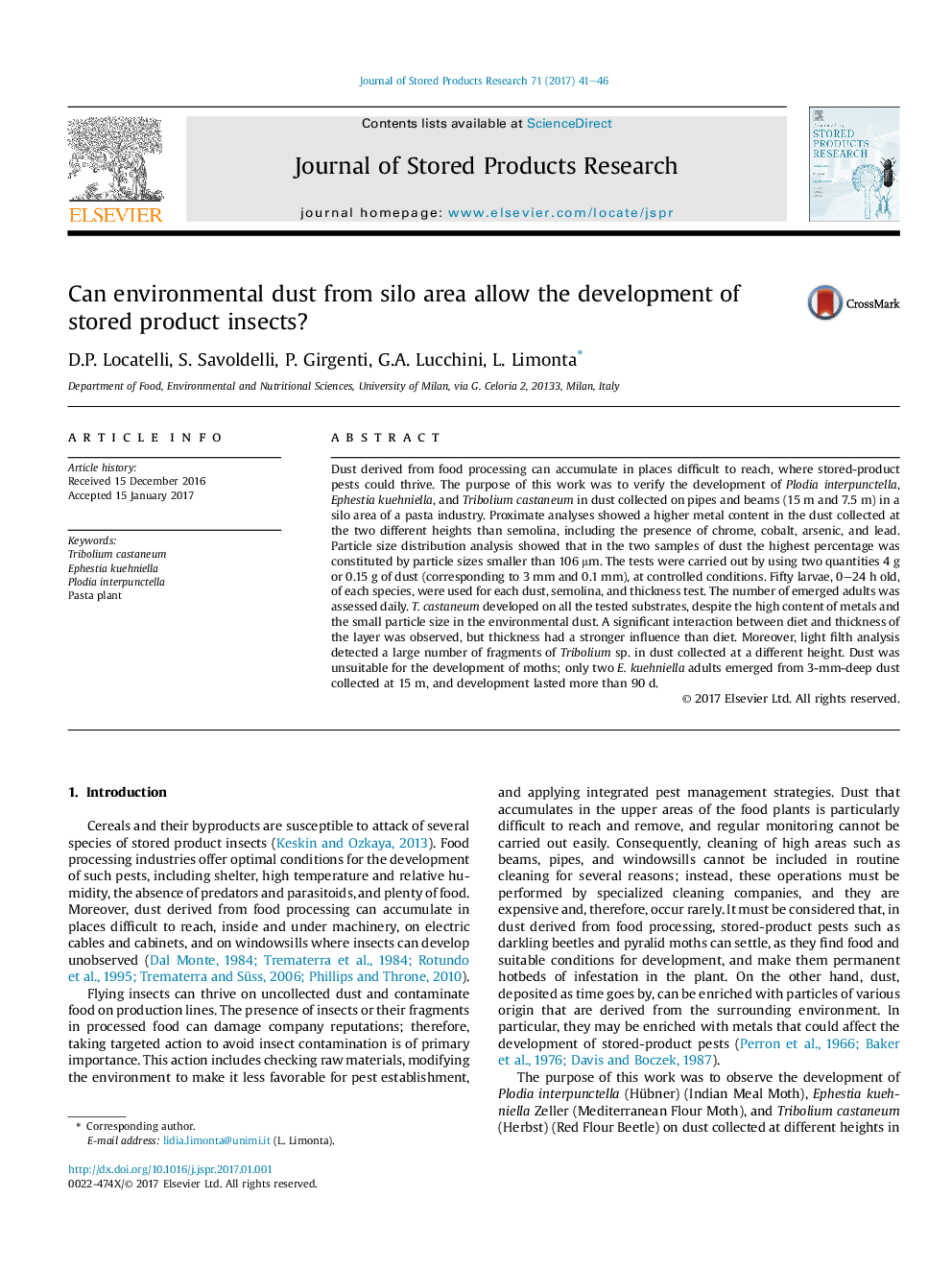| کد مقاله | کد نشریه | سال انتشار | مقاله انگلیسی | نسخه تمام متن |
|---|---|---|---|---|
| 5762586 | 1624918 | 2017 | 6 صفحه PDF | دانلود رایگان |
عنوان انگلیسی مقاله ISI
Can environmental dust from silo area allow the development of stored product insects?
ترجمه فارسی عنوان
آیا گرد و غبار محیطی از منطقه سیلو اجازه می دهد توسعه حشرات محصول ذخیره شده؟
دانلود مقاله + سفارش ترجمه
دانلود مقاله ISI انگلیسی
رایگان برای ایرانیان
موضوعات مرتبط
علوم زیستی و بیوفناوری
علوم کشاورزی و بیولوژیک
علوم زراعت و اصلاح نباتات
چکیده انگلیسی
Dust derived from food processing can accumulate in places difficult to reach, where stored-product pests could thrive. The purpose of this work was to verify the development of Plodia interpunctella, Ephestia kuehniella, and Tribolium castaneum in dust collected on pipes and beams (15 m and 7.5 m) in a silo area of a pasta industry. Proximate analyses showed a higher metal content in the dust collected at the two different heights than semolina, including the presence of chrome, cobalt, arsenic, and lead. Particle size distribution analysis showed that in the two samples of dust the highest percentage was constituted by particle sizes smaller than 106 μm. The tests were carried out by using two quantities 4 g or 0.15 g of dust (corresponding to 3 mm and 0.1 mm), at controlled conditions. Fifty larvae, 0-24 h old, of each species, were used for each dust, semolina, and thickness test. The number of emerged adults was assessed daily. T. castaneum developed on all the tested substrates, despite the high content of metals and the small particle size in the environmental dust. A significant interaction between diet and thickness of the layer was observed, but thickness had a stronger influence than diet. Moreover, light filth analysis detected a large number of fragments of Tribolium sp. in dust collected at a different height. Dust was unsuitable for the development of moths; only two E. kuehniella adults emerged from 3-mm-deep dust collected at 15 m, and development lasted more than 90 d.
ناشر
Database: Elsevier - ScienceDirect (ساینس دایرکت)
Journal: Journal of Stored Products Research - Volume 71, March 2017, Pages 41-46
Journal: Journal of Stored Products Research - Volume 71, March 2017, Pages 41-46
نویسندگان
D.P. Locatelli, S. Savoldelli, P. Girgenti, G.A. Lucchini, L. Limonta,
